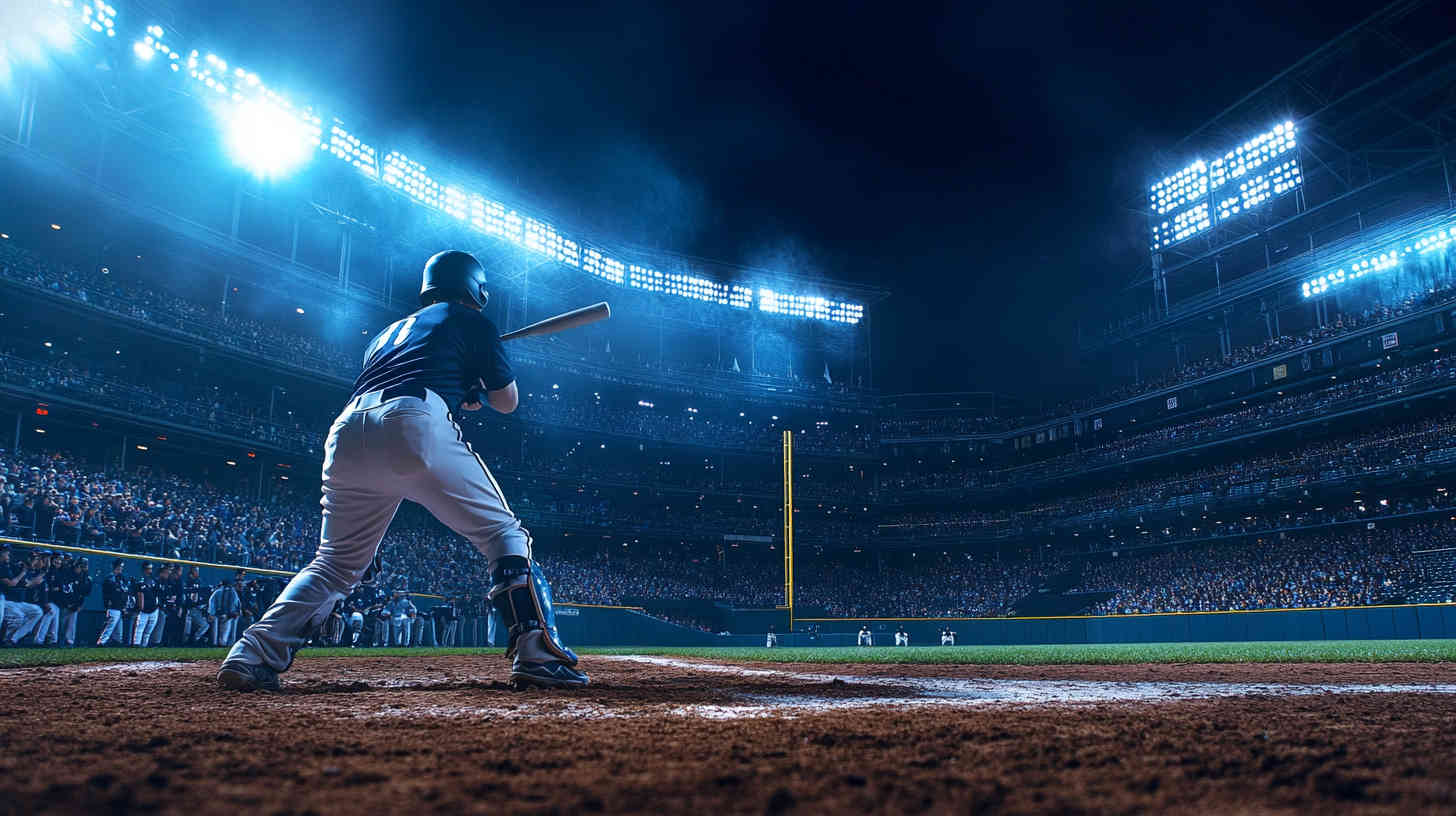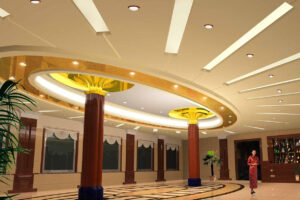Bad lighting on a baseball field is more than just annoying—it’s dangerous. I’ve seen players lose sight of the ball, umpires miss calls, and fans leave frustrated because the lighting just didn’t cut it. Without proper standards, you’re risking injuries, poor visibility, and compliance headaches. But with the right lighting setup? You create a safer field, a better game, and a professional atmosphere. So let’s break down exactly what you need to get it right.
Baseball field lighting has to hit specific benchmarks to be effective. We’re talking about targeted light levels in the infield and outfield, good uniformity across the playing surface, proper glare control, and smart pole placement. Major League Baseball, Little League, and everyone in between have their own lighting standards—especially when it comes to lux levels and performance expectations. And nowadays, LED is the clear winner—it’s more efficient, lasts longer, and delivers sharper, more consistent light. If you want even illumination without dark spots, layout and pole positioning matter just as much as the lights themselves.
Stick with me here—I’m going to walk you through exactly what you need to know so you can stop guessing and start making informed decisions.
Table of Contents
Baseball Field Dimensions
Before we jump into lighting specs, let’s talk about the size of the field—it has a huge impact on how you position the lights, how strong they need to be, and what kind of beam angles you’ll need.
- MLB Field: Base paths are 90 feet apart, mound to plate is 60 feet 6 inches, and the outfield fence ranges from 300 to 400 feet depending on the stadium.
- Little League Field: Base paths are 60 feet, with a 46-foot distance from the mound to home plate.
- Youth Fields: These vary but are usually smaller than college or pro setups.
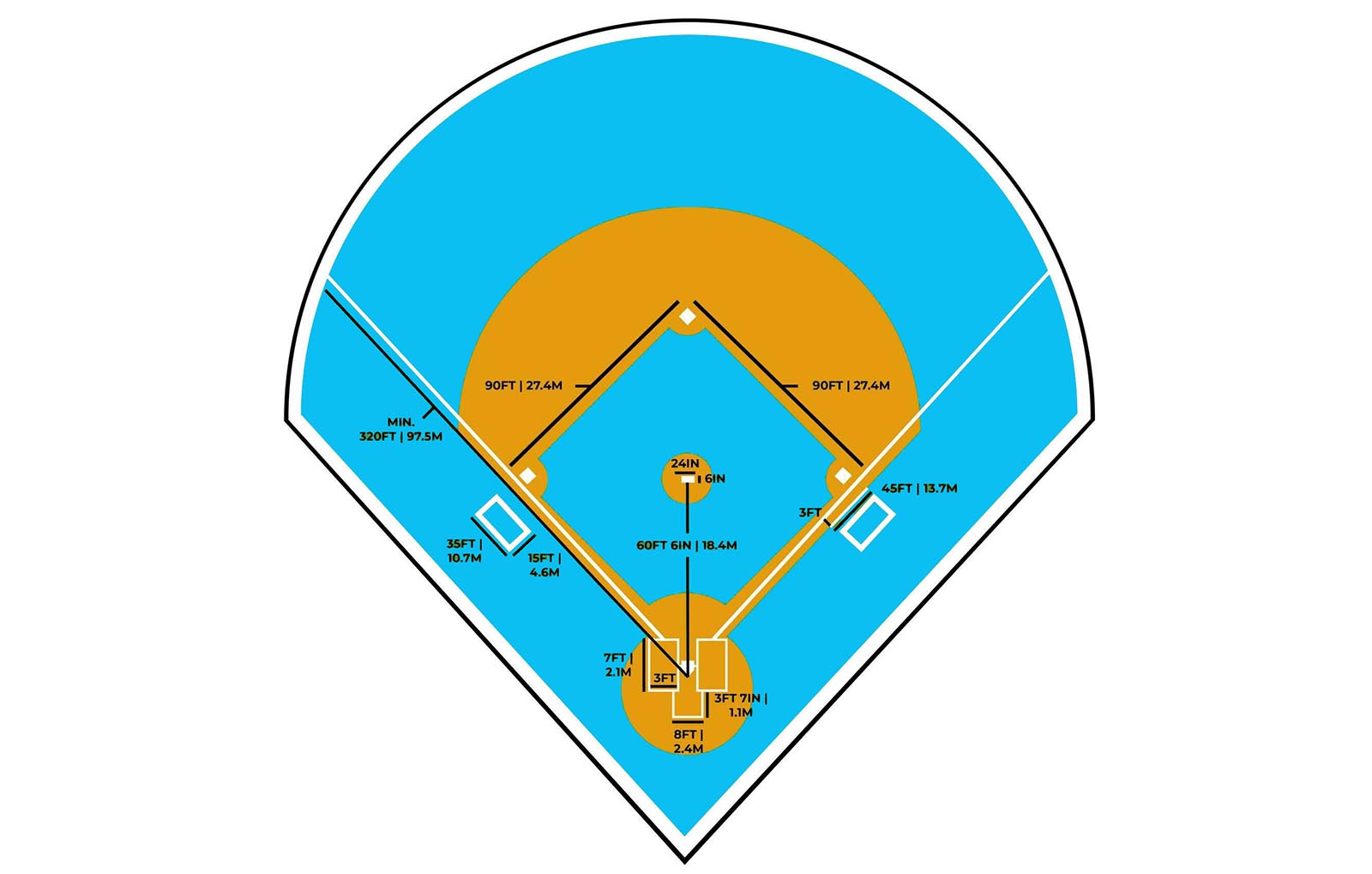
Baseball Field Dimensions
Knowing your field size helps you figure out how many poles, what kind of fixtures, and what beam angles you’ll need to create consistent, shadow-free lighting.
What Are the Lighting Standards and Requirements for Baseball Fields?
Lighting isn’t one-size-fits-all. A Little League field doesn’t need the same intensity or setup as an MLB stadium. But what they all have in common is this: proper lighting keeps players safe, lets the game run smoothly, and gives spectators a better experience. Let’s break down what each level of play needs.
MLB Lighting Standards
MLB fields demand the best of the best. These setups have to support night games, player performance, and crystal-clear broadcasts. You need consistent, powerful lighting that makes the field look like daylight—even at 9 p.m.
- Infield lighting: 100 footcandles
- Outfield lighting: 50 footcandles
- Uniformity ratio: At least 0.6
- Color temperature: 4000K to 5000K for clean, bright light
- CRI: 75 or higher so the ball and uniforms show up clearly on camera and in person
Collegiate and Minor League Fields
These fields are still high-performance, but the lighting can be scaled down a bit without sacrificing visibility or safety.
- Infield: 50–70 footcandles
- Outfield: 30–50 footcandles
- Uniformity ratio: 0.5 to 0.6
- CCT: 4000K to 5000K
- CRI: 70 or better
Youth Baseball and Little League Fields
Younger players need good lighting too, but you don’t want to overwhelm them with intense glare. Safety and visibility are still the top priorities, just with more comfort in mind.
- Infield: 30–50 footcandles
- Outfield: 20–30 footcandles
- Uniformity ratio: 0.5
- CCT: 3000K to 4000K—soft enough to reduce eye strain
- CRI: 70+ for decent color visibility without overkill
Recreational Fields
These fields are more casual, but lighting still matters. You want enough to play safely and enjoy the game, but you don’t need MLB-level intensity.
- Infield: 20–40 footcandles
- Outfield: 10–20 footcandles
- Uniformity ratio: 0.4
- CCT: 3000K to 4000K
- CRI: 70+
Here’s a quick breakdown so you can compare:
| Field Type | Infield (Footcandles) | Outfield (Footcandles) | Uniformity Ratio | CCT | CRI |
|---|---|---|---|---|---|
| MLB | 100 | 50 | 0.6 | 4000K–5000K | 75+ |
| Collegiate & Minor League | 50–70 | 30–50 | 0.5–0.6 | 4000K–5000K | 70+ |
| Youth & Little League | 30–50 | 20–30 | 0.5 | 3000K–4000K | 70+ |
| Recreational Fields | 20–40 | 10–20 | 0.4 | 3000K–4000K | 70+ |
Uniformity Ratio
This is a big one. Uniformity measures how evenly the light is spread across the field. A bad ratio means dark spots or overly bright patches—either one makes for a tough playing experience.
- Pro-level fields shoot for 0.6 or better
- Youth fields and rec fields can get by with 0.4 to 0.5
- The closer the ratio is to 1.0, the more consistent the light
Glare Control
Nothing ruins a fly ball like getting blinded by a light. Glare is a serious issue—especially when the ball’s in the air.
- Use LED fixtures with anti-glare lenses
- Shielded lights help direct light only where it’s needed
- Strategic pole placement keeps light out of players’ eyes while still lighting up the field
CCT and CRI
These two help define how “real” the lighting feels and how easy it is to track the ball.
- CCT (Color Temperature): 4000K–5000K gives you that clean, bright white light that helps with visibility
- CRI (Color Rendering Index): Aim for 70 or higher. This helps players, umpires, and cameras distinguish uniforms, the ball, and everything else clearly—even under night lighting
At the end of the day, baseball lighting isn’t just about brightness. It’s about consistency, safety, and creating a better experience for everyone on the field and in the stands. Whether you’re lighting a Little League diamond or prepping for a televised championship, getting your lighting right makes all the difference.
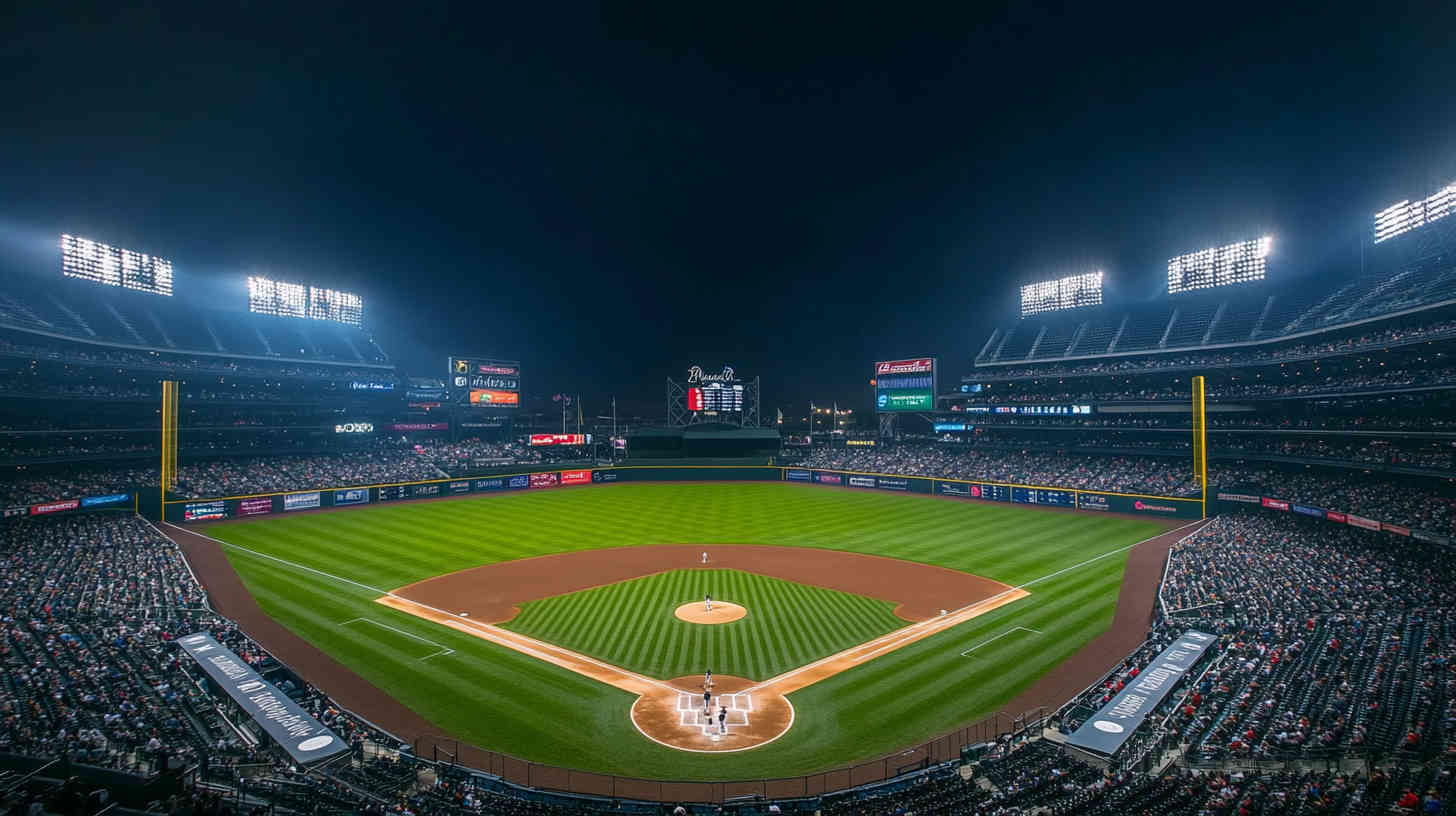
Baseball Field Lighting Layout Design and Light Pole Arrangement
I’ve worked with all kinds of baseball fields over the years, and if there’s one thing I’ve learned, it’s this: lighting layout makes or breaks the game. A smart setup gives you even light, less glare, and better visibility for everyone—players, coaches, umpires, and fans. How many poles you need and where you put them depends on the size of the field, how serious the games are, and what standards you’re aiming to meet. Let me walk you through the common setups I’ve used on different fields.
Four-Pole Design
This is the go-to setup for youth and Little League fields.
- You’ll typically see two poles behind home plate and one down each foul line.
- It gets the job done for smaller fields but doesn’t fully light the deep outfield.
- Perfect for smaller fields where budgets and lighting needs are more modest.
Six-Pole Design
This one’s popular with high schools and colleges.
- You’ve got two poles behind the plate, two more along the foul lines, and a pair in the outfield.
- It gives you better light spread and cuts down on those annoying dark patches.
- A solid choice for mid-size fields that need balanced lighting for serious play.
Eight-Pole Design
Now we’re talking pro-level lighting.
- Two behind home, four along the foul lines, and two deep in center field.
- This layout delivers top-tier uniformity, low glare, and covers every inch of the field.
- It’s the best choice for MLB parks or any stadium hosting professional games under the lights.

Choosing the Right Design
When I help clients figure out the right setup, we look at a few key things:
- The field size and level of play (is it Little League or a pro stadium?)
- Lighting standards—how much light you need and how even it needs to be
- Budget and how much space you’ve got for installing poles
Infield and Outfield Lighting Requirements
Lighting a baseball field isn’t just about flipping on a few lights and calling it a day. The infield and outfield need different lighting strategies because the gameplay is different in each area. Trust me, the right lighting makes a huge difference in how the game plays and how safe everyone is.
Infield Lighting Requirements
The infield sees the most action. It needs to be lit like a stage so batters, pitchers, and fielders can all see the ball clearly.
- For MLB fields, shoot for 100 footcandles.
- College and minor leagues need 50 to 70 footcandles.
- Little League and youth fields should have 30 to 50 footcandles.
- Recreational fields can work with 20 to 40.
- Uniformity ratio should be at least 0.6—this keeps light consistent and shadows at bay.
- Glare control is a must—nobody wants a pop fly lost in the light.
- Poles are usually placed behind home plate and along the foul lines to spread the light evenly.
Outfield Lighting Requirements
Outfielders have a tough job chasing down fly balls. They need wide, balanced light coverage to track the ball all the way.
- MLB and pro fields need about 50 footcandles.
- College and minor league fields: 30 to 50 footcandles.
- Youth fields: 20 to 30 footcandles.
- Rec fields: 10 to 20 footcandles.
- A uniformity ratio of 0.5 or better keeps visibility smooth from foul line to foul line.
- Keep glare low by carefully placing your fixtures—especially in center field.
- Poles should surround the field, with extra focus on center field to cover the gaps.
Key Considerations for Balanced Lighting
Here’s what I always recommend to my clients:
- Go with LED fixtures—they’re brighter, more efficient, and last way longer.
- High CRI lighting helps you see the ball better, especially at night.
- Proper aiming angles make sure the ball doesn’t vanish midair.
- Use smart controls so you can dim or adjust lighting depending on whether it’s game day or practice.
If you get the infield and outfield setup right, you’ll have a field that’s safe, easy to play on, and great for both players and fans.
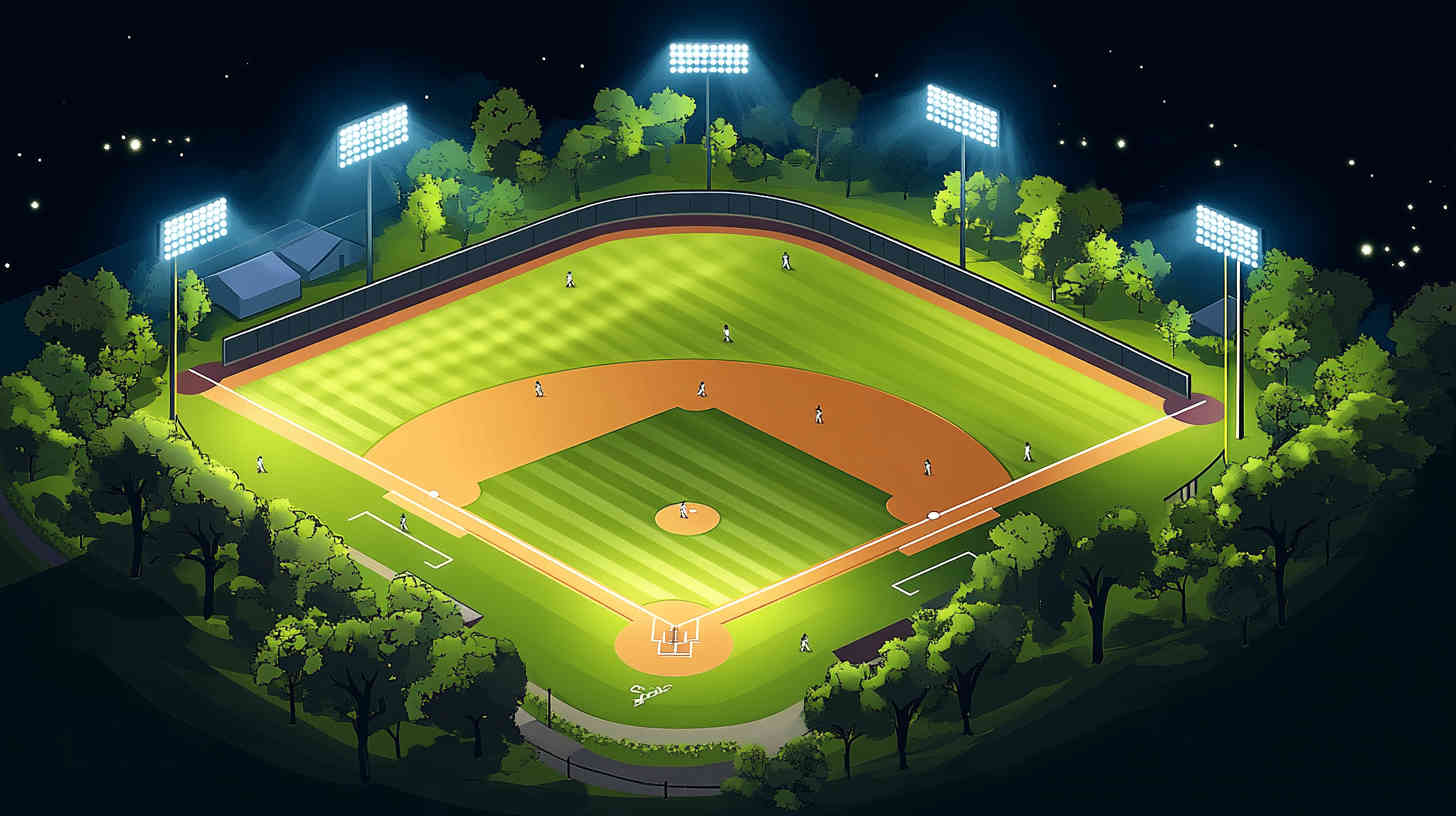
What Type of Lighting Is Used on Baseball Fields?
Not all lighting is created equal, especially when it comes to baseball. I’ve seen both sides—fields still running on old metal halides and ones that have upgraded to cutting-edge LED. Here’s how it breaks down.
LED Sports Lights
LEDs are where the industry is headed, and for good reason.
- They use up to 70% less energy than metal halide.
- They can last 50,000 hours or more—seriously, you’ll barely have to touch them.
- They turn on instantly. No warm-up delay.
- The light is even and consistent, with way better coverage.
- They’re built to reduce glare, so the ball doesn’t vanish mid-air.
- You can add motion sensors, dimmers, and even control them remotely.
- Less maintenance means less downtime and fewer headaches.
- Ideal for everything from Little League to Major League stadiums.
Metal Halide Lights
These were the standard for years, and you’ll still find them on plenty of fields.
- They’re bright and powerful, no doubt about that.
- Cheaper to install up front, which is why they’re still around.
- But they take 15 to 30 minutes to reach full brightness.
- They suck up way more energy.
- They only last 10,000 to 20,000 hours, so you’ll be replacing bulbs more often.
- Maintenance is a pain—ballasts, bulbs, the whole nine yards.
- They dim over time, so the light you get on day one won’t last.
- Best for older fields or parks that haven’t made the jump to LED yet.
Choosing the Right Lighting for Baseball Fields
Here’s my two cents:
- If you’re thinking long-term and want lower energy bills and fewer problems, go LED.
- If budget is tight and you just need to get the lights on, metal halide might work—but you’ll pay for it later.
- More and more stadiums are switching to LED, and for good reason—it’s efficient, reliable, and just plain better.
Conclusion
Getting your baseball field lighting right isn’t optional—it’s essential. Whether it’s for safety, game performance, or giving fans a great view, your lighting setup has to deliver. Stick to the right standards, get the uniformity dialed in, and don’t skimp on glare control. LED is the future—it saves money, lasts longer, and lights up the field better than anything else.
Need help finding the perfect LED lighting solution for your baseball field? Reach out to us—I’ll help you make the best call for your field and your budget.


